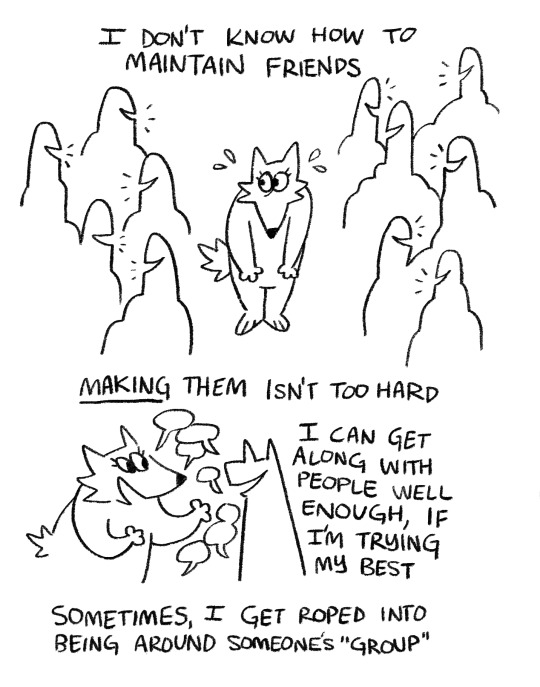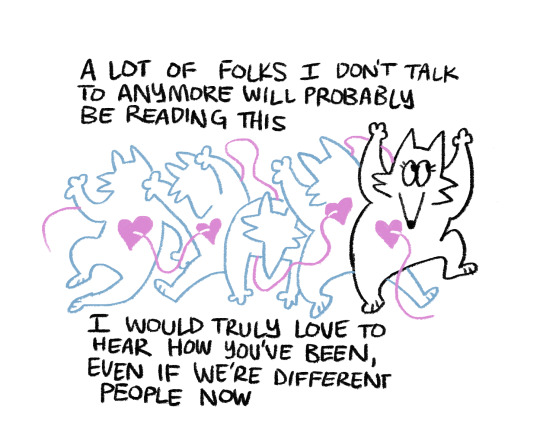Text
There aren’t any tutorials showing how to do a twisted rib in the double knitting technique, so I thought I’d show it off.
It’s a little bit tricky because of the weird colour control, but as long as you follow the pattern & remember to split the yarn colours on the second set of stitches you can easily fall into a nice rhythm.
196 notes
·
View notes
Text
If you are a fellow fingerweaver, please let me know! I've wanted to talk to other weavers and just have the hardest time finding anyone!
33 notes
·
View notes
Text
Nice color choices in a flamme pattern with an eye.


The tension was a bitch to keep regular on this one but I'm really happy I finally got around to testing out this pattern
94 notes
·
View notes
Text
IT IS DONE


pattern is based on Andrea Cull’s DNA Pullover, and the double helix cable pattern was charted by @ub-sessed, which can be found here
8K notes
·
View notes
Text
This makes me *feel* History



RESILIENCE-“LIVING IN A PANDEMIC SINCE 1492”
This Plague Doctor mask and headdress was designed to remind Native American people that they are survivors and warriors. Sickness and plagues are nothing new to Native people. Ever since first contact, Natives have faced new illnesses never before seen. Through it all, our people survive and thrive today. This work of art commemorates the fighting spirit of Native Americans.
The mask is made from premium Wicket and Craig tooling leather, and is hand sewn. The mask is done in a ledger art style. Written on the mask are various diseases that Native people have faced such as smallpox, cholera, typhoid, tuberculosis, and COVID-19. The lenses are wrapped in sweet grass and hand sewn as well. The plants and flowers are actually medicinal plants used by Native Americans for centuries. Marsh Marigold (yellow); Pokeweed (cone shape with purple berries); Purple Coneflower (lavender color with orange center); Skunk Cabbage (burgundy with bright green).
The headdress is made from hand painted imitation eagle feathers, ermine pelts, red wool, red horse hair, and buckskin leather. The band hand tooled, painted and also made from Wicket and Craig tooling leather. The cap is made from a re-purposed Buffalo felt hat, just as many real Plains headdresses are made.
3K notes
·
View notes
Text
3 weeks is pretty fast for knitting a sweater, but I want to highlight my late grandma who once knitted 13 sweaters in about 2 weeks, the fastest one being done in 1 day!!
Sweater that says "I spent three weeks knitting and all I got was this lousy sweater"
630 notes
·
View notes
Text
Beautiful! I think I'll try the hem stitch on my next finger weaving works.
Finishing off the weave: hem stitch, cutting off, and the first look at the unspooled fabric! Featuring Sophie.

I'm very happy with the way this came out. I never want to weave with this yarn again. This ended up as a 24-hour project!
I still need to do some little cleanup bits, and maybe twist the fringe. I'm not sure if I want to keep this as a scarf, or use it as a fabric to sew into something.
140 notes
·
View notes
Text
Some progress

I'm starting my first big arrow sash piece!

Another view of the set up

Took me about 2h to cut and arrange all 129 threads.
11 notes
·
View notes
Note
While I agree with everything up there, I also want to add that finger weaving is also an important craft for the French Canadian patrimoine and folklore. Look up the Quebec winter Carnival, the mascot ("Bonhomme") wears an arrowhead sash which is redone every few years by a French Canadian artisan as a way of keeping this craft alive.
Hi! I want to start off by saying your projects are absolutely gorgeous /gen, I love the way you create!
And I'm sorry to bother you with this question, but I know finger-weaving is an indigenous craft originally, and I am not indigenous. I think it looks like a really amazing craft that I'd like to learn, but I wanted to ask if it would be appropriative for me to do so? I've made a few very small woven bracelets with a very simple pattern so far, and I wanted to try to be respectful of the craft and community before I went further.
You're obviously free to ignore this question if it's rude! I'm really sorry again, I feel a little bit silly. Your weaving is really impressive and I think you're amazing!!
Hey! Thanks for asking, anon, this is anything but rude, so don't worry!
I am going to be perfectly honest here. I am not indigenous either. The skills I have are self taught from books that have been published in the craft. When I first started posting videos about my work I was worried about whether or not I'd be accused of appropriation, but I'm finding the opposite is true. Having a healthy respect for the craft and the cultures, as well as the history behind them, goes a long way.
I have met other indigenous weavers and they were more excited about the fact that I was learning how to weave to begin with. The subject of my ethnicity didn't come up at all. (Very white Caucasian, btw) They even gave me pointers and complimented me on my work, which made me want to improve even more and make sure this art didn't die out.
And I won't lie, I've thought about the probability of being accused of cultural appropriation. I am a white girl doing an indigenous craft. But I'm trying to learn as much as I can along the way, and I don't really do this for any personal gain. I do it because it's a way to learn more about the people and culture that were living in my area long before I showed up, and I want to respect that. Learning what I can, where I can, is the best way I know how.
So go ahead and start learning! The books are out there, and so are the YouTube videos to help you. The community is small, but it's out there.
18 notes
·
View notes
Text
I'm starting my first big arrow sash piece!

Another view of the set up

Took me about 2h to cut and arrange all 129 threads.
11 notes
·
View notes
Text
So at my workplace, we fund a Food Is Free shelf. It's the basics: take what you need, give what you can - our town has a high level of poverty, there's a cost of living crisis, be the good you want to see in the world etc etc.
Today we had a guy knock on the door and ask if we had a plastic bag he could use to carry a few things - I said sure, got him a plastic bag, and he started packing up his 2 rolls of toilet paper, his 3 or 4 foodstuff items. He said he'd been to a funeral out of town (1500 kms away) and spent his paycheck on fuel - he was only broke till Friday, he said.
And I said, well I'm glad we could help, it's why we have the shelf. We want the community to use it.
And he said:
But people ABUSE it! I've seen people take heaps of stuff from it - and they don't even have kids or anything. And it's fair enough, some people are struggling until the next paycheck, but other people just ABUSE it. You need a sign that says TAKE ONE ITEM ONLY or something. I've taken something from here maybe twice, but I've seen people coming round every week! I've even put stuff on the shelf! Yeah, you need CAMERAS or something. People abuse it.
So here is a man who is actively utilising a public resource that we created to support our local community...And yet he is so brainwashed by capitalism into thinking that people don't deserve basic needs - if they're not working hard, or maybe they're struggling but they don't have it As Bad as others, or they're using a FREE RESOURCE more often than HE thinks is acceptable. He thinks that we should use security cameras to crack down on people "STEALING" from the Food is FREE shelf. Like he's more worthy, like he's a better person, because he doesn't need as much help as others might.
Sometimes, when something is free, people might abuse it. But isn't it better to offer the support to people who need it? To offer an opportunity for people to get back on their feet (even if they're only broke till Friday)? To provide help, no questions asked and no conditions needed?
So what if people abuse it - isn't it worth it if helps someone?
26K notes
·
View notes
Text
It’s almost distressing how talented he is
24K notes
·
View notes








